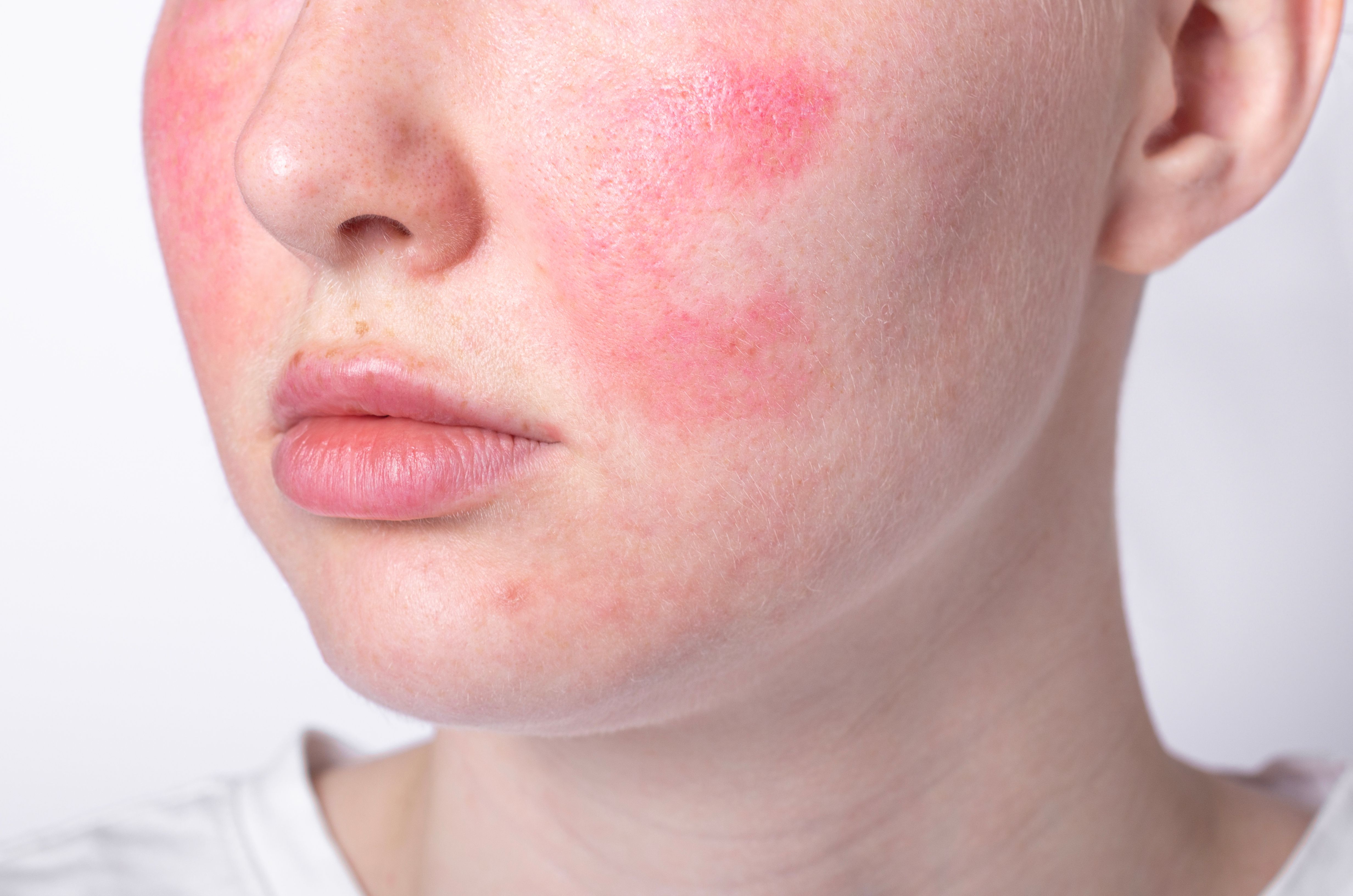- Acne
- Actinic Keratosis
- Aesthetics
- Alopecia
- Atopic Dermatitis
- Buy-and-Bill
- COVID-19
- Case-Based Roundtable
- Chronic Hand Eczema
- Chronic Spontaneous Urticaria
- Drug Watch
- Eczema
- General Dermatology
- Hidradenitis Suppurativa
- Melasma
- NP and PA
- Pediatric Dermatology
- Pigmentary Disorders
- Practice Management
- Precision Medicine and Biologics
- Prurigo Nodularis
- Psoriasis
- Psoriatic Arthritis
- Rare Disease
- Rosacea
- Skin Cancer
- Vitiligo
- Wound Care
News
Article
Ferulic Acid Effective in Treating Papulopustular Rosacea
Author(s):
Key Takeaways
- Topical ferulic acid showed an 80% effective rate in treating papulopustular rosacea, outperforming the control group.
- Improvements in pustule reduction and skin barrier repair were observed, with significant changes noted by week 4.
The trial results indicated improved disease control, integrity of skin barrier, and minimal reactions for patients with rosacea.
Image Credit: © Shauerman - stock.adobe.com

A recent study established the efficacy of topical ferulic acid on patients with papulopustular rosacea.1 The clinical trial also analyzed how the treatment affects skin barrier function and sensitivity, as it is a significant pathogenic factor of rosacea.2
The randomized, single-center, single-blind trial included 60 patients with mild to moderate papulopustular rosacea on both cheeks. Participants fell between the ages of 26 and 53; 11 were males and 49 were females. The study took place from January to December 2023 at the Affiliated Hospital of Shandong Second Medical University’s Department of Dermatology.
Participants were randomly assigned to each parallel group. The observation group applied ferulic acid solution twice daily for 6 weeks while the control group used normal saline. Each of these topicals was applied after daily facial cleansing. Both groups also received oral doxycycline hydrochloride tablets (0.1 g) once a day. Patients were asked to keep their faces relatively clean and free from sun exposure.
VISIA imaging and self-rating scales were used to assess lesions and barrier function before and during treatment. Initial criteria included a Clinician Erythema Assessment Score of 0 to 3 and an Investigator Global Assessment of Rosacea Severity Score between 0 and 4 at baseline. These were also recorded at the 2-, 4-, and 6-week marks.
Overall, both groups saw significant improvement from baseline but the total effective rate in the observation group was 80.00%, compared to 63.33% in the control group. Improvement was first seen at week 2 but greater improvement in the observation group after 4 to 6 weeks (p < 0.05). These findings suggest that ferulic acid should be administered for 2 to 4 weeks, with necessary adjustments if the therapeutic effect is insufficient after 6 weeks.
When comparing VISIA images, investigators saw noticeable reductions in the amount of pustules and erythema, particularly on the nose and cheeks. Signs of skin barrier repair, such as increased stratum corneum hydration and decreased transepidermal water loss, were also found.
Some patients experienced mild adverse events during the study. Specifically, 9 reported an initial greasy sensation while 1 noted tingling/itching. These, however, did not affect patient compliance.
“Due to ferulic acid's low solubility and stability, oil-based matrices are necessary for better absorption,” the authors said. “New encapsulation technologies like nanoemulsions, hydrogels, and phospholipid complexes can address these shortcomings.”
The researchers also noted the study limitation of a small sample size and recommended that future studies include a greater number of participants. Although ferulic acid is known for its anti-aging and anti-inflammatory benefits, there are currently no other reports on its use for treating patients with rosacea.3 Further trials are needed to clarify its long-term safety profile, especially compared to other treatment methods.
“Effective rosacea treatment requires repairing the skin barrier, reducing inflammation, and promoting vasoconstriction,” the authors wrote. “[Other] treatments pose challenges: minocycline can cause pigmentation and dizziness, brimonidine can induce rebound erythema, carvedilol can cause bradycardia and hypotension, and laser treatments can further damage the skin barrier. Therefore, the development of new treatments for rosacea is essential.”
References
1. Wang X, Xue Y, Zhu H, et al. Ferulic Acid in the Treatment of Papulopustular Rosacea: A Randomized Controlled Study. J Cosmet Dermatol. Published online October 16, 2024. doi:10.1111/jocd.16611
2. Zhu W, Hamblin MR, Wen X. Role of the skin microbiota and intestinal microbiome in rosacea. Front Microbiol. 2023;14:1108661. Published 2023 Feb 10. doi:10.3389/fmicb.2023.1108661
3. Li D, Rui YX, Guo SD, Luan F, Liu R, Zeng N. Ferulic acid: A review of its pharmacology, pharmacokinetics and derivatives. Life Sci. 2021;284:119921. doi:10.1016/j.lfs.2021.119921
Newsletter
Like what you’re reading? Subscribe to Dermatology Times for weekly updates on therapies, innovations, and real-world practice tips.














